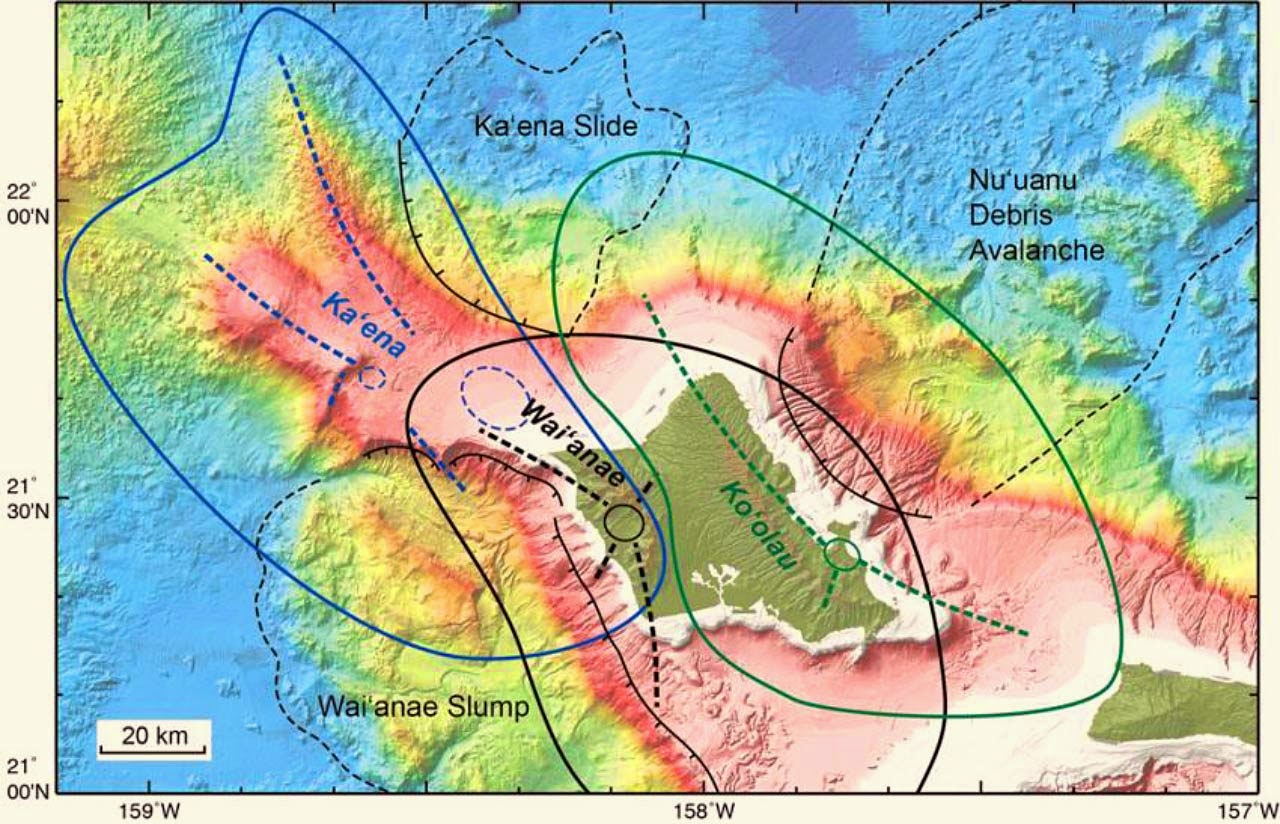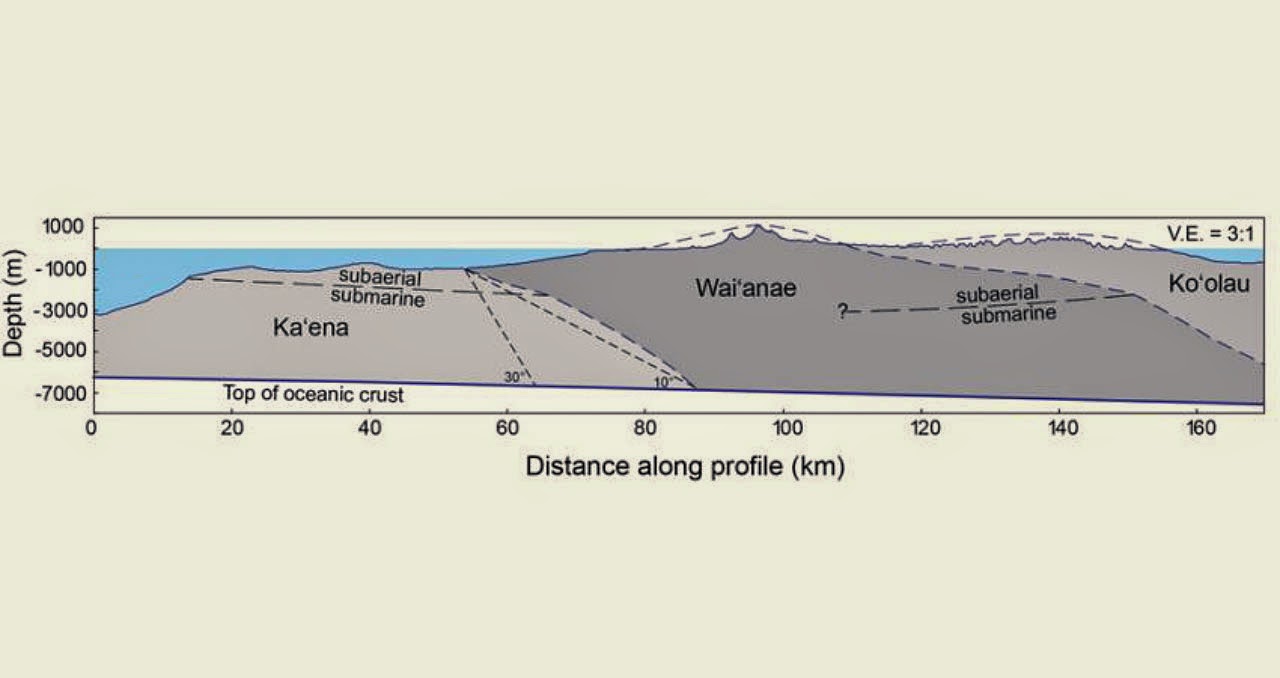
As we know it today, O’ahu is the remnants of two volcanoes, Wai’anae and Ko’olau. But extending almost 100 km from the western tip of this island is a large region of shallow bathymetry called the submarine Ka’ena Ridge.
It is that region that has now been recognized to represent a precursor volcano to the island of O’ahu, and on whose flanks the Wai’anae and Ko’olau volcanoes later formed.
Prior to the recognition of Ka’ena Volcano, Wai’anae Volcano was assumed to have been exceptionally large and to have formed an unusually large distance from its next oldest neighbor – Kaua’i.
Prof John Sinton of the University of Hawai’i’s School of Ocean and Earth Science and Technology, who is the lead author of a paper published in the Geological Society of America Bulletin, explained: “both of these assumptions can now be revised: Wai’anae is not as large as previously thought and Ka’ena Volcano formed in the region between Kauai and Wai’anae.”

In 2010 scientists documented enigmatic chemistry of some unusual lavas of Wai’anae.
“We previously knew that they formed by partial melting of the crust beneath Wai’anae, but we didn’t understand why they have the isotopic composition that they do. Now, we realize that the deep crust that melted under Waianae is actually part of the earlier Ka’ena Volcano,” Prof Sinton said.
The high-quality bathymetric data showed that Ka’ena Ridge had an unusual morphology.
Prof Sinton’s team then began collecting samples from Ka’ena and Wai’alu submarine Ridges.
The geochemical and age data, along with geological observations and geophysical data confirmed that Ka’ena was not part of Waianae, but rather was an earlier volcanic edifice. Wai’anae must have been built on the flanks of Ka’ena.
“What is particularly interesting is that Ka’ena appears to have had an unusually prolonged history as a submarine volcano, only breaching the ocean surface very late in its history,” Prof Sinton said.
Note : The above story is based on materials provided by GSA Release No. 14-35










